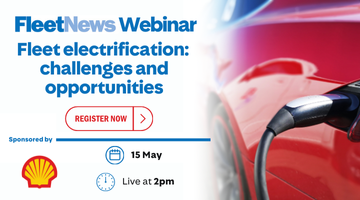It’s a horrible feeling – the sudden realisation that a combination of absent-mindedness mixed with petrol, panic and diesel has rendered you immobile at the fuel pump.
The working day is over, schedule shot to bits, while your car is stranded on its spot, in the way of other drivers, with no hiding place for your stupidity.
Misfuelling a car like this is an amazingly frequent occurrence – it will happen more than 400 times today across the UK alone.
The AA was visiting so many red-faced motorists itself, around 60,000 each year – three times the number of calls for running out of fuel –that it decided it was time to set up a division specifically dedicated to the problem.
And it was this new service, AA Fuel Assist, which won Best Innovation at the 2008 Fleet News Awards.
Donald MacSporran, AA technical performance manager, explains why the problem has been getting significantly bigger, especially over the past five years, and what the AA decided to do about it.
He says: “We have seen a significant growth in diesel car sales and modern diesels are so quiet that people sometimes forget they’re driving one.
"You also have an increasing number of people owning more than one car, so it’s only too easy to absent-mindedly put the wrong fuel in.
“We continually look at innovative solutions for problems that we traditionally can’t fix at the roadside, in order to help get our members on the way quicker.
“We came up with this unique service that gets 99% of vehicles back on the road after the 45-minute fuel drain. We save them the hassle of having to wait for a garage to book them in and up to £5,000 in repair bills.”
Donald continues: “If someone realises they have misfuelled, they should ideally not start the engine and call us for advice.
"Depending on the level of contamination, our technical team will advise over the phone if the vehicle can be safely driven but, in most cases, a fuel drain will be required.
“Although people always feel embarrassed, we try to lessen the pain by offering a speedy, cost-effective solution for the customer, as well as minimising the impact on the environment.”
The system was developed in conjunction with a company called Whale Tankers, a Ravenshaw-based firm that is one of the largest manufacturers of liquid waste tankers in Europe.
As a result, the 20 specially adapted vans, LDV Maxus or Mitsubishi L200s, are fitted with 330-litre capacity tanks which allow technicians to undertake around seven fuel drains before having to empty the tank.
There are 20 fully-trained technicians allowing almost total nationwide coverage with a further 20 support patrols for cover.
The AA claims to have conducted more than 15,000 fuel drains since it started trials on the system in October 2006,equating to more than 750,000 litres of contaminated fuel pumped out and then disposed of.
Also important is that the system ensures that no fuel is spilt during the pumping-out process, while the tanks are specially sealed to ensure no vapour is released and cannot be tampered with by thieves.
A bunding system ensures that should the tank become ruptured – in the event of an accident perhaps – fuel will not leak out of the vehicle.
Around £1.7m was invested in the system and the AA will easily recover the development and manufacturing costs.
Already, 14 of the top 20 leasing fleets by size in the UK have signed up to the programme, with more to follow.
The AA also has a nationwide agreement with BP, Total, Esso and independent dealer networks to provide the service to customers stranded on their forecourts, and further agreements with the major fuel retailers are in the offing.
Becoming a Fuel Assist technician requires a number of skills. Because they are dealing with highly flammable liquids, often on forecourts filled with even more flammable liquid, safety is an important element of the process.
As a result, the technicians undergo an intensive six-week course (whereas ‘normal’ AA technicians have a four-week course for all work), which specialises not only in the technical processes but also in health and safety and environmental considerations that allow them to work on forecourts.
The success rate of the system is 99%, although Donald says it is surprising how hardy cars are to misfuelling.
“I’ve seen a case where a man misfuelled his car in Reading, drove to a meeting in Birmingham and got halfway back before having to pull over. We drained the system and he was able to continue.
“Key to the success of this is specialist technical knowledge of how each manufacturer’s engines work and how best to drain the system. That’s why the training takes so long.”
Next up for Fuel Assist will be a pioneering project to return the fuel to the network. Working with the Environment Agency, the AA has developed a process for distilling the two fuels back into their original forms.
At the moment, the fuel pumped out is mixed in with other waste oil, sealed into drums and classed as hazardous waste. This new system means that petrol and diesel, such precious commodities, are not wasted.
















Login to comment
Comments
No comments have been made yet.